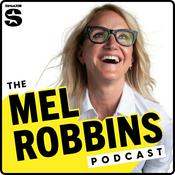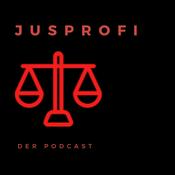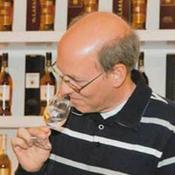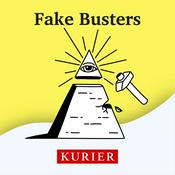295 Episoden

293: How Solar Panels Can Improve Vine Resilience and Wine Balance
18.12.2025 | 42 Min.
Rising temperatures and erratic weather accelerate ripening, spread disease faster, and shift sugar, alcohol, and acidity levels. All of which threaten wine quality and style. At Geisenheim University, Dr. Manfred Stoll is testing "vitivoltaics": semi-transparent, trackable solar panels installed above vines. The system moderates heat, radiation, and extreme weather, while improving young vine establishment and water infiltration. Beyond the vineyard, this renewable energy can power everything from irrigation pumps to EV charging stations for wine tasting guests. Resources: 281: How Rootstock Impacts Vine Drought Tolerance and Longevity 283: Developing Cold-Hardy Grapes with 23andMe Technology Agrivoltaics in the Vineyard Agrivoltaics in wine growing areas Are These Smart Solar Panels the Future of Sustainable Vineyards? Assessing the economic performance of agrivoltaic systems in vineyards - framework development, simulated scenarios and directions for future research Grape Growth and Berry Development Under the Agrivoltaic System in Vineyards Manfred Stoll Soaking Up the Sun: Agrivoltaics Build Resiliency into Producers' Operations in Rio Grande Valley Vineyard Team Programs: Juan Nevarez Memorial Scholarship - Donate Online Courses – DPR & CCA Hours SIP Certified – Show your care for the people and planet Sustainable Ag Expo – The premiere winegrowing event of the year Vineyard Team – Become a Member

292: Testing Vinifera vs. Hybrids: Which Survives Climate Stress Better?
04.12.2025 | 40 Min.
Will hybrid grapes help vineyards survive climate change? Professor Karine Pedneault of the Université du Québec en Outaouais explores this question through trials that expose grapevines to drought and heat stress. Testing both vinifera and hybrid varieties, her research measured plant water flow and metabolic responses to determine resilience. While hybrids still carry a stigma around flavor, they showed promising resistance, raising the potential to reduce fungicide use by up to half and adapt more sustainably to extreme weather scenarios. Resources: 223: New Decision Support System for Irrigation Efficiency 213: High Resolution Data from Space Helps Farmers Plan for Climate Change Karine Pedneault Karine Pedneault – Google Scholar Karine Pedneault - Instagram Karine Pedneault - LinkedIn Karine Pedneault – Research Gate Metabolic response of vitis vinifera and interspecific vitis sp. varieties to heat stress, water deficit and combined stress, using a metabolomic approach The organic vineyard as a balanced ecosystem: Improved organic grape management and impacts on wine quality Vineyard Team Programs: Juan Nevarez Memorial Scholarship - Donate Online Courses – DPR & CCA Hours SIP Certified – Show your care for the people and planet Sustainable Ag Expo – The premiere winegrowing event of the year Vineyard Team – Become a Member

290: Fighting Powdery Mildew with UVC Light
20.11.2025 | 27 Min.
With fungicide resistance on the rise, grape growers are looking for new ways to manage powdery mildew. Lexi McDaniel, Viticulture Extension Specialist at North Carolina State University, explores the science behind using UVC light to combat this grapevine disease by directly disrupting the DNA bonds needed for replication. She shares insights from her trials, including why the light must be applied at night, how often it needs to pass through the vineyard, and how this technique compares to traditional fungicide programs in both cost and effectiveness. Resources: 117: Grapevine Mildew Control with UV Light 197: Managing the Sour Rot Disease Complex in Grapes 219: Intelligent Sprayers to Improve Fungicide Applications and Save Money 235: Battling Fungicide Resistance with Glove Sampling 266: Soft Pesticide Trial: Powdery Mildew, Downy Mildew, Botrytis, and Sour Rot Field-Scale Ultraviolet-C Light Applications to Manage Grapevine Powdery Mildew Grapevine Powery Mildew UV-C Information Introducing UVC applications for powdery mildew control in grapevines Lexie McDaniel North Carolina State Extension Ultraviolet-C (UVC) Light Can Be a Powerful Tool Against Grapevine Powdery Mildew Vineyard Team Programs: Juan Nevarez Memorial Scholarship - Donate Online Courses – DPR & CCA Hours SIP Certified – Show your care for the people and planet Sustainable Ag Expo – The premiere winegrowing event of the year Vineyard Team – Become a Member

291: 3 Eco Buzzwords You Didn't Know Are Sustainable | Marketing Tip Monday
17.11.2025 | 2 Min.
Terms like "regenerative," "climate‑smart," and "social equity" aren't just buzzwords—they're the building blocks of sustainable winegrowing. Learn wine brands protect soil, reduce energy use, and support people, all while producing high-quality wine. Resources: *** Tell Your Sustainable Story Online Course *** Apply for SIP Certified Wine Likely Story Strategies Marketing Tips eNewsletter Sustainable Story Worksheet Print Electronic Vineyard Team Programs: Juan Nevarez Memorial Scholarship - Donate SIP Certified – Show your care for the people and planet Sustainable Ag Expo – The premiere winegrowing event of the year Vineyard Team – Become a Member

289: How Spotted Lanternfly Puts Grapes at Risk—and What Growers Can Do
06.11.2025 | 38 Min.
Spotted lanternfly (SLF) is more than a nuisance, it poses a serious risk to vineyards. Brian Walsh, Extension Educator and Spotted Lanternfly Researcher with Penn State Extension, explains how this invasive insect threatens grapes across the eastern U.S. From unusual egg-laying behavior to honeydew-covered canopies that attract stinging insects, Walsh explores why vineyards are especially at risk and how growers can prepare during peak pressure in September. Learn about insecticide options, biocontrol efforts, and scouting strategies—whether SLF is in your area or not. Resources: 96: Spotted Lanternfly - Threat to California 175: How to Prepare for Invasive Pests in Your Vineyard An Introduction to the Invasive Spotted Lanternfly:Webinar on April 21, 2023 Brian Walsh Research Update of Spotted Lanternfly in Grape: Webinar on March 9, 2022 Spotted Lantern Fly Spotted Lanternfly Management in Vineyards Spotted Lanternfly Management for Landscape Professionals Vineyard Team Programs: Juan Nevarez Memorial Scholarship - Donate Online Courses – DPR & CCA Hours SIP Certified – Show your care for the people and planet Sustainable Ag Expo – The premiere winegrowing event of the year – Discount Code PODCAST25 Vineyard Team – Become a Member
Weitere Bildung Podcasts
Trending Bildung Podcasts
Über Sustainable Winegrowing
Höre Sustainable Winegrowing, Wissen mit Zoé und viele andere Podcasts aus aller Welt mit der radio.at-App
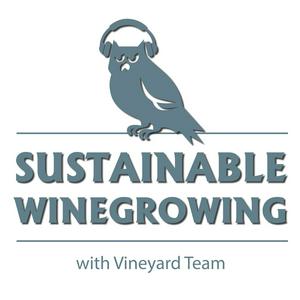
Hol dir die kostenlose radio.at App
- Sender und Podcasts favorisieren
- Streamen via Wifi oder Bluetooth
- Unterstützt Carplay & Android Auto
- viele weitere App Funktionen
Hol dir die kostenlose radio.at App
- Sender und Podcasts favorisieren
- Streamen via Wifi oder Bluetooth
- Unterstützt Carplay & Android Auto
- viele weitere App Funktionen


Sustainable Winegrowing
App laden,
loshören.









